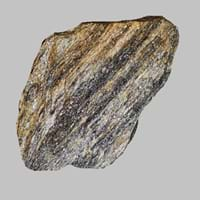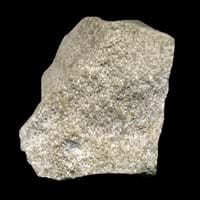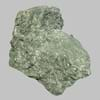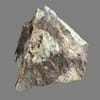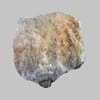Definition
Mylonite is a metamorphic rock formed by ductile deformation during intense shearing encountered during folding and faulting, a process termed cataclastic or dynamic metamorphism
Oolite is a sedimentary rock formed from ooids, spherical grains which are composed of concentric layers of calcite
Origin
New Zealand
Unknown
Discoverer
Unknown
Unknown
Etymology
From Greek mulōn mill + -ite
From oo- + -lite, after German Oolit. A rock consisting of fine grains of carbonate of lime
Class
Metamorphic Rocks
Sedimentary Rocks
Sub-Class
Durable Rock, Medium Hardness Rock
Durable Rock, Medium Hardness Rock
Group
Not Applicable
Volcanic
Other Categories
Fine Grained Rock, Opaque Rock
Fine Grained Rock, Opaque Rock
Texture
Foliated
Clastic or Non-Clastic
Color
Black to Grey
Black, Blue, Brown, Cream, Green, Grey, Pink, Red, Silver, White, Yellow
Durability
Durable
Durable
Scratch Resistant
Yes
Yes
Appearance
Dull, Banded and Foilated
Rounded and Rough
Interior Uses
Decorative Aggregates, Interior Decoration
Decorative Aggregates, Flooring, Interior Decoration
Exterior Uses
As Building Stone, As Facing Stone, Paving Stone, Garden Decoration
As Building Stone, As Facing Stone, Garden Decoration, Paving Stone
Other Architectural Uses
Curbing
Not Yet Used
Construction Industry
for Road Aggregate, Landscaping, Roadstone
Cement Manufacture, Cobblestones, Landscaping
Medical Industry
Not Yet Used
Not Yet Used
Antiquity Uses
Artifacts, Monuments
Artifacts
Commercial Uses
Creating Artwork, Gemstone, Jewelry
Creating Artwork, Jewelry, Used in aquariums
Types
Blastomylonites, Ultramylonites and Phyllonites
Not Available
Features
Surfaces are often shiny
Available in lots of colors, Generally rough to touch, Very fine grained rock
Archaeological Significance
Monuments
Used
Not Yet Used
Famous Monuments
Data Not Available
Not Applicable
Sculpture
Used
Not Yet Used
Famous Sculptures
Data Not Available
Not Applicable
Figurines
Used
Not Yet Used
Formation
Mylonites are ductilely deformed rocks formed by the accumulation of large shear strain, in ductile fault zones.
Oolites form when layers of calcite are deposited around a sand grain or fossil piece and are rolled around in calm water, which makes them round.
Mineral Content
Porphyroblasts
Calcite, Chert, Clay, Dolomite, Quartz, Sand, Silt
Compound Content
Aluminium Oxide, Calcium Sulfate, Chromium(III) Oxide, Iron(III) Oxide, Magnesium Carbonate, Silicon Dioxide
Aluminium Oxide, Ca, NaCl, CaO, Iron(III) Oxide, FeO, MgO
Types of Metamorphism
Not Applicable
Not Applicable
Types of Weathering
Biological Weathering, Chemical Weathering, Mechanical Weathering
Biological Weathering, Chemical Weathering, Mechanical Weathering
Types of Erosion
Chemical Erosion, Sea Erosion, Wind Erosion
Chemical Erosion, Coastal Erosion
Grain Size
Fine Grained
Fine Grained
Fracture
Conchoidal
Conchoidal
Porosity
Highly Porous
Less Porous
Luster
Shiny
Pearly to Shiny
Compressive Strength
Not Available
Cleavage
Conchoidal
Non-Existent
Toughness
Not Available
1
Specific Gravity
2.97-3.05
Not Available
Transparency
Opaque
Opaque
Density
2.6-4.8 g/cm3
Not Available
Specific Heat Capacity
Not Available
Resistance
Heat Resistant, Impact Resistant, Pressure Resistant
Heat Resistant, Wear Resistant
Deposits in Eastern Continents
Asia
China, India, Indonesia, Saudi Arabia, South Korea
Brunei, India, Indonesia, Malaysia, Singapore, Thailand, Vietnam
Africa
Eritrea, Ethiopia, Ghana, South Africa, Western Africa
Cameroon, Chad, Ghana, Kenya, Malawi, Sudan, Tanzania, Togo, Zambia, Zimbabwe
Europe
England, Finland, France, Germany, Great Britain, Greece, United Kingdom
United Kingdom
Others
Not Yet Found
Not Yet Found
Deposits in Western Continents
South America
Not Yet Found
Colombia
Deposits in Oceania Continent
Australia
Central Australia, Western Australia
Adelaide, New Zealand, Queensland, Tonga, Victoria, Yorke Peninsula
All about Mylonite and Oolite Properties
Know all about Mylonite and Oolite properties here. All properties of rocks are important as they define the type of rock and its application. Mylonite belongs to Metamorphic Rocks while Oolite belongs to Sedimentary Rocks.Texture of Mylonite is Foliated whereas that of Oolite is Clastic or Non-Clastic. Mylonite appears Dull, Banded and Foilated and Oolite appears Rounded and Rough. The luster of Mylonite is shiny while that of Oolite is pearly to shiny. Mylonite is available in black to grey colors whereas Oolite is available in black, blue, brown, cream, green, grey, pink, red, silver, white, yellow colors. The commercial uses of Mylonite are creating artwork, gemstone, jewelry and that of Oolite are creating artwork, jewelry, used in aquariums.
